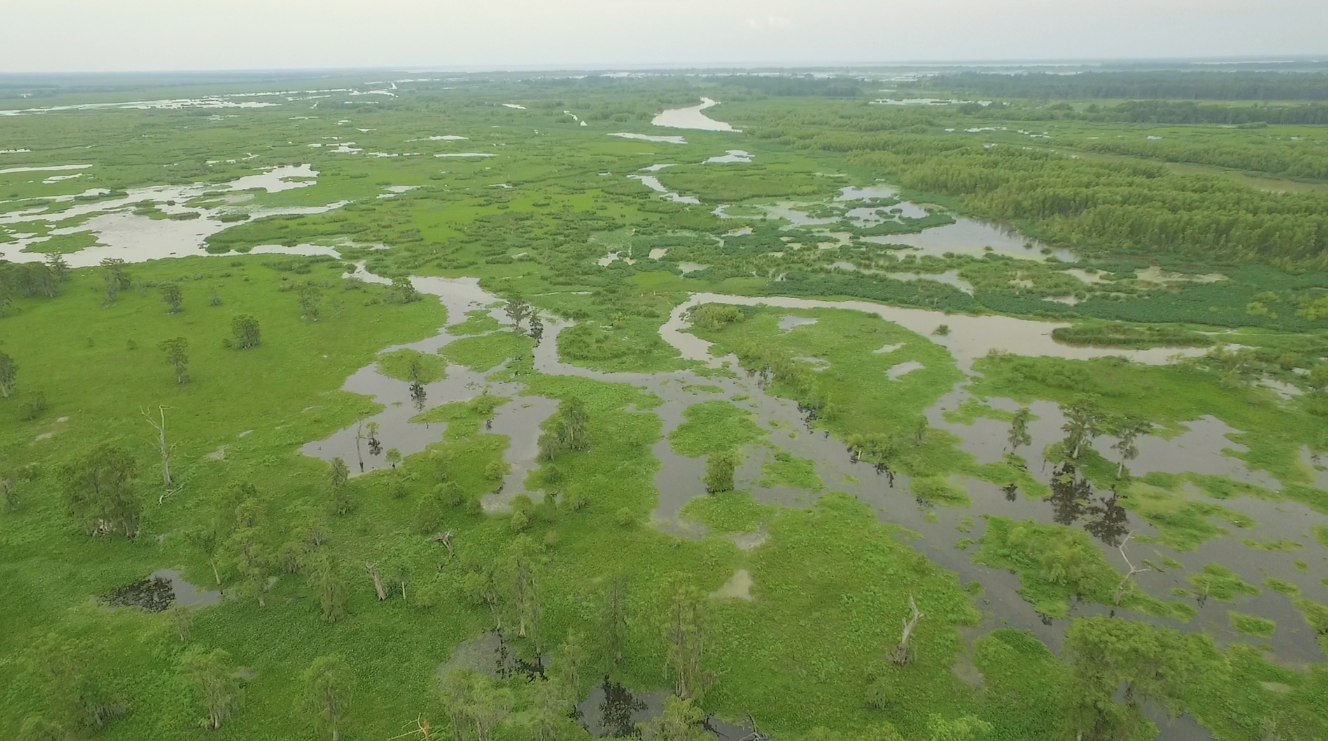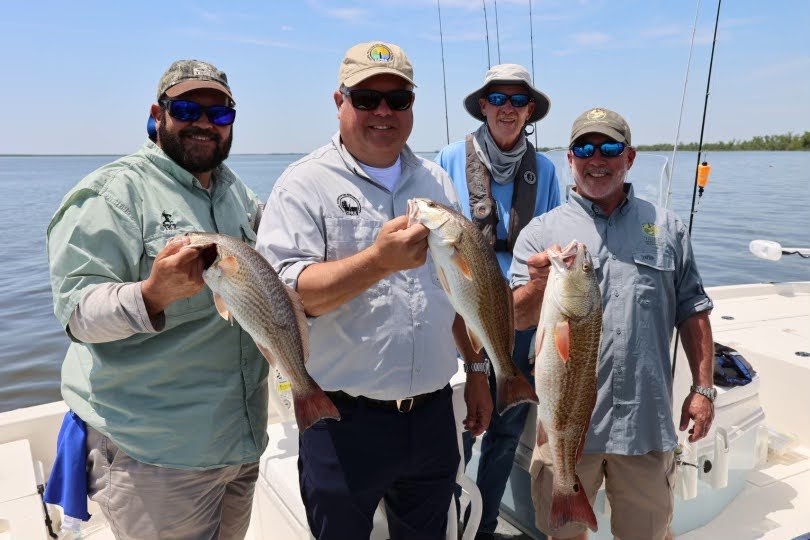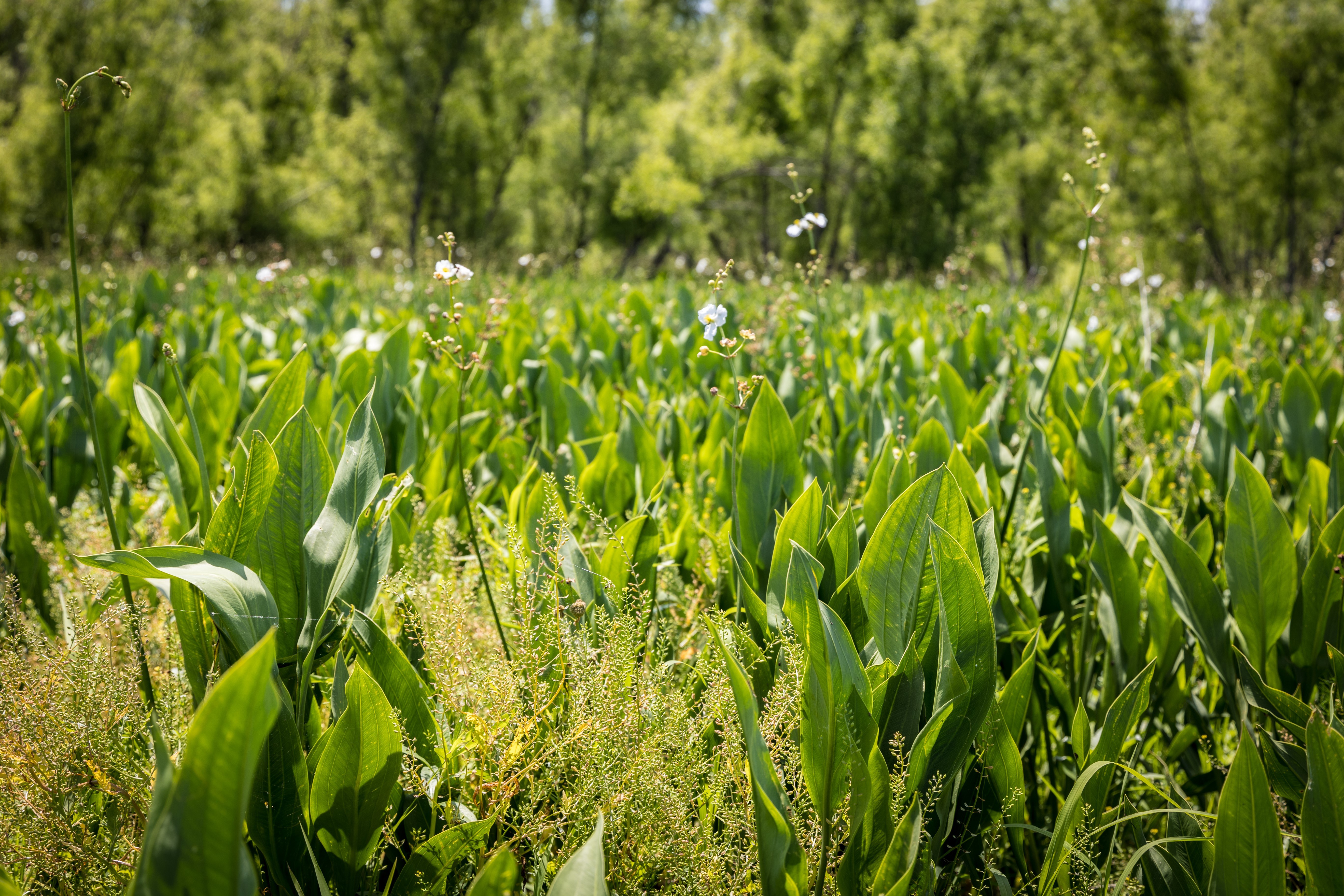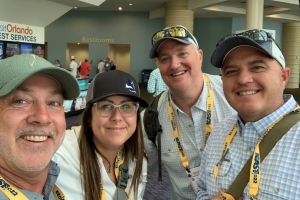Creating Paradise at Davis Pond
Nearly a year after Hurricane Ida, the Davis Pond Freshwater Diversion provides answers for both coastal restoration and protection, as it both builds prime fish and wildlife habitat and mitigates storm damage in the Barataria Basin.
By Matthew Waguespack
Sportsman Outreach Coordinator, Vanishing Paradise

Drone footage of Davis Pond in 2021.
Ever since Hall of Famer Kevin Van Dam’s 2011 Bassmaster Classic victory, anglers have kept a close eye on and a wet line on Louisiana’s Lake Cataouatche. KVD finished the tournament with a record-setting 3-day total weight of 69 lbs. 11oz. Just the idea that 15 largemouth bass, caught in and around Lake Cataouatche, could weigh almost 70 pounds left anglers flabbergasted. What conditions in this specific area of Sportsman’s Paradise yielded those winners? We can trace the answer back to the impact of the Davis Pond Freshwater Diversion.
Located on the west bank of the Mississippi River in St. Charles Parish, the Davis Pond Freshwater Diversion was created to reduce high salinity levels and prevent land loss by combating saltwater encroachment within the Barataria Basin. The diversion channels fresh water from the Mississippi River into nearby Davis Pond, which eventually drains into the basin, mainly through Lake Cataouatche and Lake Salvador. A few years into its operation, land started growing at Davis Pond – an unexpected but welcome byproduct of the freshwater diversion. The marshy landscape that encompasses Davis Pond naturally captured sediment from the river’s outflow, which ultimately led to vegetation taking root and new habitat for alligators, birds…and BAIT. One thing every angler knows is: find the bait and you’ll find the fish.

Fishing at Davis Pond in Louisiana with the Bayou Wild TV crew along with Chris Macaluso of Theodore Roosevelt Conservation Partnership and Bren Haase of Louisiana Coastal Protection and Restoration Authority.
VP’s own Bill Cooksey recently met up with our friends at Bayou Wild TV and experienced just what the Davis Pond outflow area has to offer as it empties into Lake Cataouatche. Along with Chris Macaluso from the Theodore Roosevelt Conservation Partnership and Bren Haase from Louisiana’s Coastal Protection and Restoration Authority, it wasn’t long after approaching the first cut near the outflow area that everyone had a fish on! The moving water provides optimal conditions for little crabs and large schools of shad, which provides a prime food source for redfish. By matching the hatch and throwing a combination of white/chart Humdinger spinnerbaits, Zoom Speed Craws, and Matrix Shads under a 4 Horsemen cork, our crew was able to catch numerous redfish of all sizes.
Davis Pond’s conditions aren’t only a boon for anglers, though. In the face of major storms like Hurricane Ida in 2021, the extra sediment and fresh water from the river in this area gives us a working case study on how those resources can mitigate storm damage. While Ida took a major toll on the Barataria Basin, destroying and uprooting significant marsh, Davis Pond looked basically unscathed compared to other nearby areas. This resilience can likely be attributed, at least in part, to the influx of sediment being deposited into Davis Pond by the river. This sediment provided protection for vegetation along with many other freshwater fish species that could have otherwise died due to saltwater intrusion.
“Every time you have a major hurricane hit an area like the Barataria Basin you’ll have a large storm surge of saltwater that will kill all vegetation,” said Chris Macaluso. “Hurricane Ida left Lake Cataouatche barren of grass except for the outflow area from Davis Pond.”

As it builds habitat and helps mitigate storm damage, Davis Pond offers us an insight into the ultimate tool for coastal restoration and protection – using the sediment and fresh water from the river itself to strengthen nearby wetlands.
